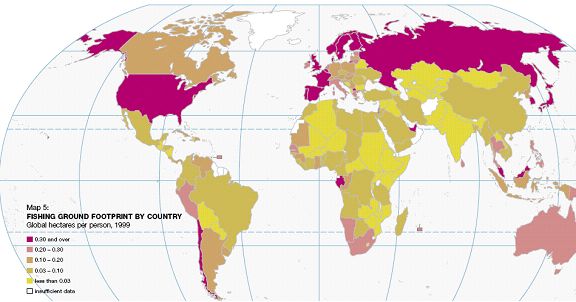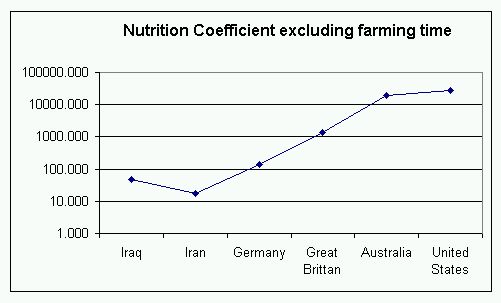Leucine Metabolism and Alzheimer's Dementia
Background
Leucine is one of the twenty most common amino acids and coded for by DNA. It is isomeric with isoleucine. Nutritionally, in humans, leucine is an essential amino acid. (http://en.wikipedia.org/wiki/Leucine)Leucine is the most common amino acid found in proteins, and is essential for optimal growth in infancy and childhood and for nitrogen equilibrium in adults. It is suspected that Leucine plays a part in maintaining muscles by equalizing synthesis and breakdown of proteins.
The major food sources of leucine are whole grains and milk and milk products. Eggs, pork, beef, chicken, pulses, Soya beans, and leafy vegetables are good sources of leucine.
An example of early-onset autosomal dominant familial Alzheimer disease (FAD) has been found to be caused by a leucine-to-valine change at codon 153 (L153V) of the presenilin 1 (PSEN1) gene. This finding raises the possibility that such substitution may also be induced by a chronic lack of Leucine in individuals with normal genes.
Observation 1
Elderly humans experience muscle wasting. This wasting can be stopped and even reversed through consumption of appropriately timed Leucine supplements. (http://news.bbc.co.uk/1/hi/health/4502862.stm)
Implication 1
Elderly humans absorb Leucine poorly from a normal diet. As a result, they become Leucine deficient.
Observation 2
In Alzheimer’s the beta-amyloid plaque contains Leucine.
Implication 2
An unknown process causes CNS accumulation of beta-amyloid plaque. Such accumulation can logically be caused through one of the following mechanisms:
- Leucine is not excreted due to a failure of the normal excretory process:
- Transport failure
- Transport blockage
- Leucine is abnormally retained
- Genetic causes: http://www.sciencemag.org/cgi/content/summary/281/5376/507
- Age related failure of clean up process:
· Scientists Make Discovery in Alzheimer's (ABC News;Fri, 11 Aug2006)
Scientists Find Cell Cleaners That Banish Alzheimer's-Linked Gunk, Which May Lead to New Drug
Scientists Find Cell Cleaners That Banish Alzheimer's-Linked Gunk, Which May Lead to New Drug
· Scientists make discovery in Alzheimer's (AP via Yahoo! News;Fri, 11 Aug 2006)
Scientists have discovered molecular janitors that clear away a sticky gunk blamed for Alzheimer's disease - until they get old and quit sweeping up.
Scientists have discovered molecular janitors that clear away a sticky gunk blamed for Alzheimer's disease - until they get old and quit sweeping up.
- Leucine is bound to the beta-amyloid plaque in a passive, non-active ingredient
Observation 3
Leucine is rapidly turned over in the normal brain.
Implication 3
An adequate supply of Leucine is necessary to support normal turn over in the brain.
Hypothesis
A systemic lack of Leucine caused by failure to absorb adequate amounts from the diet leads to abnormal brain Leucine metabolism that directly, or indirectly, causes a buildup of beta-amyloid plaque in the central nervous system.
Possible Approaches to Tests of the Hypothesis
- Compare the systemic Leucine levels of Alzheimer’s and normal elderly adults.
- Identify animals having a Leucine metabolism similar to humans and conduct an experiment whereby Leucine levels are manipulated and brain morphology is studied.
- Dietary deprivation
- Chemical interference in vivo.
- Examine the effects on neural tissue of varying levels of Leucine in vitro.
- Compare the levels of Leucine in animal models of Alzheimer’s.
- Investigate the relationship between neurotoxins that cause Alzheimer’s like lesions and their effect on Leucine metabolism.
- Investigate the morphology of muscle wasting related to Leucine deprivation.
- Look for plaque related deposits in elderly muscles
- Look for plaque related deposits in animals deprived of Leucine.
- Look for neuromuscular junction effects in elderly muscles.
- Look for neuromuscular junction effects in animals deprived of Leucine.
- Consider the relationship between the known changes in neuromuscular junctions with aging and leucine supplementation.
- Investigate the location of the beta-amyloid plaque buildup and localization of Leucine metabolism in Alzheimer’s and normal brains.
- Developing a Leucine specific stain/antibody could accelerate such studies.
- Explore the localization of Leucine metabolism in the normal CNS using both human and animal models. (A quick approach would be to use mice as an initial demonstration of differential Leucine metabolism across brain areas.)
- Focus special attention on CNS astrocytes.
Web References
In addition to those links included above, you may wish to review information found at these websites:
Janssen, J. C., P. L. Lantos, et al. (2001). "Autopsy-confirmed familial early-onset Alzheimer disease caused by the l153V presenilin 1 mutation." Arch Neurol 58(6): 953-8. As found in: http://lansbury.bwh.harvard.edu/Literature/Review/amyloid_plaque_2001.htm
From the University of Waterloo’s Alzheimer’s Research Exchange website (11 Aug 06):
· Scientists Make Discovery in Alzheimer's (ABC News;Fri, 11 Aug 2006 16:29:18 GMT)
Scientists Find Cell Cleaners That Banish Alzheimer's-Linked Gunk, Which May Lead to New Drug
Scientists Find Cell Cleaners That Banish Alzheimer's-Linked Gunk, Which May Lead to New Drug
· Scientists make discovery in Alzheimer's (AP via Yahoo! News;Fri, 11 Aug 2006 02:36:11 GMT)
Scientists have discovered molecular janitors that clear away a sticky gunk blamed for Alzheimer's disease — until they get old and quit sweeping up.
Scientists have discovered molecular janitors that clear away a sticky gunk blamed for Alzheimer's disease — until they get old and quit sweeping up.
· New biomarkers could help doctors spot Alzheimer's and other neurodegenerative diseases (EurekAlert!;Fri, 11 Aug 2006 18:16:37 GMT)
Neurodegenerative diseases like Alzheimer's and Parkinson's in their early stages can be difficult for physicians to spot, and many diagnoses are incorrect. A finding by researchers at the University of Washington and Harborview Medical Center may soon help in the diagnosis of such diseases.
Neurodegenerative diseases like Alzheimer's and Parkinson's in their early stages can be difficult for physicians to spot, and many diagnoses are incorrect. A finding by researchers at the University of Washington and Harborview Medical Center may soon help in the diagnosis of such diseases.
· New Research Points Toward Mechanism Of Age-onset Toxicity Of Alzheimer's Protein (Science Daily;Fri, 11 Aug 2006 16:13:58 GMT)
Like most neurodegenerative diseases, Alzheimer's disease usually appears late in life, raising the question of whether it is a disastrous consequence of aging or if the toxic protein aggregates that cause the disease simply take a long time to form. Now, a new study shows that aging is what's critical. Harmful beta amyloid aggregates accumulate when aging impedes two molecular clean-up crews
Like most neurodegenerative diseases, Alzheimer's disease usually appears late in life, raising the question of whether it is a disastrous consequence of aging or if the toxic protein aggregates that cause the disease simply take a long time to form. Now, a new study shows that aging is what's critical. Harmful beta amyloid aggregates accumulate when aging impedes two molecular clean-up crews
· Calories and Alzheimer’s (ScienCentral;Fri, 11 Aug 2006 15:56:53 GMT)
Scientists are finding that reducing calories might be a way to slow the progression of Alzheimer's disease. This ScienCentral News video explains how a study in mice is offering new clues in fighting the disease.
Scientists are finding that reducing calories might be a way to slow the progression of Alzheimer's disease. This ScienCentral News video explains how a study in mice is offering new clues in fighting the disease.
· Molecular find may help Alzheimer's research (USA Today;Thu, 10 Aug 2006 18:50:01 GMT)
Scientists have discovered molecular janitors that clear away a sticky gunk blamed for Alzheimer's disease until they get old and quit sweeping up. The finding helps explain why Alzheimer's is a disease of aging. More importantly, it suggests a new weapon: drugs that give nature's cleanup crews a boost.
Scientists have discovered molecular janitors that clear away a sticky gunk blamed for Alzheimer's disease until they get old and quit sweeping up. The finding helps explain why Alzheimer's is a disease of aging. More importantly, it suggests a new weapon: drugs that give nature's cleanup crews a boost.
· Cell Activities that Protect against Alzheimer's Protein Buildup Found (Senior Journal;Fri, 11 Aug 2006 18:39:31 GMT)
August 11, 2006 – Yesterday there was news of research finding it is aging that actually causes the brain to stop cleaning out the protein build-up that causes Alzheimer's.
August 11, 2006 – Yesterday there was news of research finding it is aging that actually causes the brain to stop cleaning out the protein build-up that causes Alzheimer's.
· Scientists find natural Alzheimer's controls (Boston Globe;Fri, 11 Aug 2006 08:27:17 GMT)
WASHINGTON -- Scientists have discovered molecular janitors that clear away a sticky substance in the brain blamed for Alzheimer's disease -- until they get old and quit sweeping up.
WASHINGTON -- Scientists have discovered molecular janitors that clear away a sticky substance in the brain blamed for Alzheimer's disease -- until they get old and quit sweeping up.
· Aging 'janitors' key to disease Study shows why Alzheimer's plaque build-up affects the old (Pioneer Press;Fri, 11 Aug 2006 08:04:33 GMT)
WASHINGTON — Scientists have discovered molecular "janitors" that clear away a sticky gunk blamed for Alzheimer's disease — until those molecules get old and quit sweeping up.
WASHINGTON — Scientists have discovered molecular "janitors" that clear away a sticky gunk blamed for Alzheimer's disease — until those molecules get old and quit sweeping up.
· Genetic link is identified for aging, Alzheimer's (San Diego Union-Tribune;Fri, 11 Aug 2006 10:16:24 GMT)
Alzheimer's disease may be caused by a failure of the brain's natural ability to clean house as it gets older, San Diego scientists have found.
Alzheimer's disease may be caused by a failure of the brain's natural ability to clean house as it gets older, San Diego scientists have found.
References
Shiga, D. 2005. Disease detector: Chemical test may spot Alzheimer's. Science News 167(Feb. 5):83. Available at http://www.sciencenews.org/articles/20050205/fob1.asp.
Seppa, N. 2006. Looking ahead: Tests might predict Alzheimer's risk. Science News 169(Feb. 18):102. Available to subscribers at http://www.sciencenews.org/articles/20060218/fob7.asp.
______. 2005. A new test for Alzheimer's risk? Science News 167(Feb. 5):93. Available to subscribers at http://www.sciencenews.org/articles/20050205/note13.asp.
______. 2003. Early warning? Spinal fluid may signal Alzheimer's presence. Science News 164(Sept. 20):179. Available to subscribers at http://www.sciencenews.org/articles/20030920/fob2.asp.
Labels: Alzheimer, brain, CNS, health care, leucine, mental, plaque



